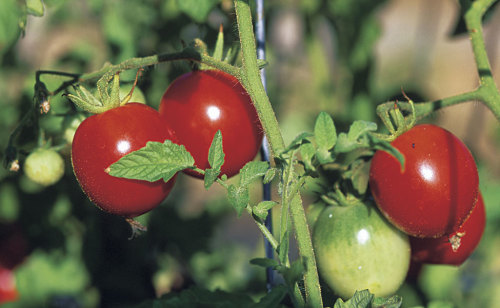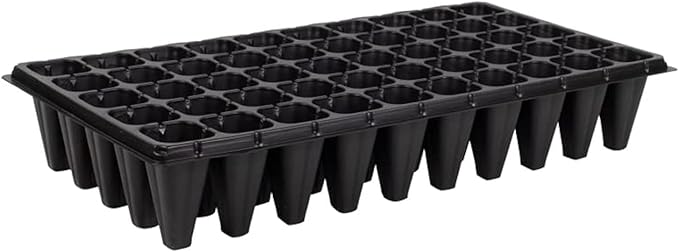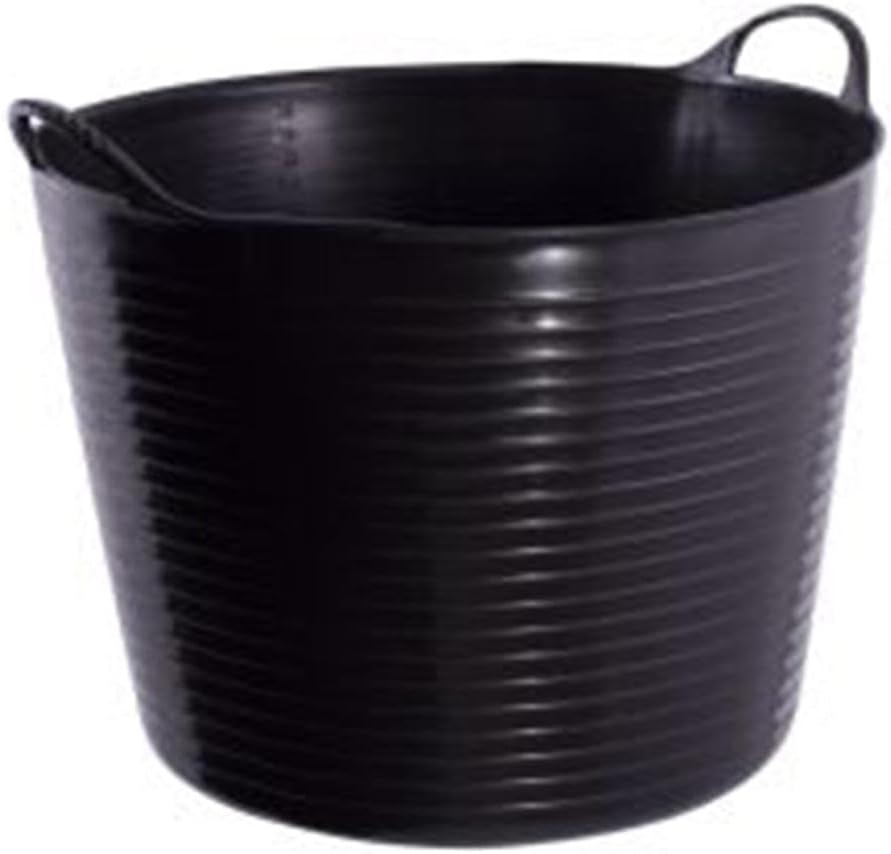
Tomatoes. They are reason alone for having a kitchen garden. But beginning gardeners lusting after sweet, juicy, jewel-like fruits are often frustrated with the results. The reality is that tomatoes are a bit tricky to grow. One of the surest ways to healthy, productive plants is a strategy that prevents tomato diseases.
Study seed catalogs for resistant varieties. There is a nationwide enthusiasm for heirloom vegetables, especially tomatoes, and with good reason. The old favorites have many special qualities: fine flavor, tender skins, and robust color. Inspired gardeners can save their own heirloom seed from year to year since the plants aren’t hybrids. But let’s not forget why newer varieties were developed in the first place. Many of the old timers are limited in the range of environments where they grow well. A little too cold or hot, more rain than usual, a lot of dew, and all of a sudden you have yourself some sick tomatoes.
There is a fair amount to learn about raising good tomatoes. So, if you are a beginning gardener, have only a small growing space, or live in a place with weather extremes, you would do well to start with tomato varieties that have resistance to major diseases bred into them. Planting resistant varieties will enable you to concentrate on learning the horticultural ropes without also struggling with serious bacterial, fungal, viral, or nematode problems.
How do you find out which tomatoes are resistant to the common diseases? Read seed catalogs. You can depend on the catalogs from major seed companies to indicate resistant varieties. Major fungal problems like fusarium wilt, verticillium wilt, and alternaria will be noted with a letter code next to the variety name. The codes are explained in the introduction to the catalog’s tomatoes section. In addition to selecting disease-resistant varieties, there are many other things you can do to prevent tomato disease problems.
[[[PAGE]]]
Crop rotation and compost fight diseases from the soil. One of the best ways to avoid serious disease problems is not planting tomatoes where they, or any other members of the Solanaceae, have been grown during the past three years. This is a tall order, since eggplants, peppers, and potatoes—big favorites of home gardeners—are all closely related to tomatoes. Rotating where you plant vegetables is a good idea in general, but it’s critical for tomatoes because some of their most serious disease pathogens can survive for a number of years in the soil.
But what if your space is so small, a four-year rotation isn’t possible? Plant tomato varieties that show some resistance to nematodes as well as to the common foliar diseases like verticillium and fusarium wilts. Then add plenty of aerobic compost to the soil.
| Learn more: • Yes, You Can Practice Crop Rotation |
Aerobic compost is turned every three days for several weeks, which speeds up decomposition and adds oxygen to the finished product. The compost should reach a temperature of 150°F during the process. Allow it to cool down and mature for at least four weeks. The finished compost will contain many beneficial microbes that can provide biological control of the undesirable soil organisms that cause sick tomatoes.
Add the compost either in the fall or in spring, at least four weeks before you plant your tomatoes. Mix in two or three heaping shovelfuls of compost per two cubic feet of soil.
The biological control of soil pathogens has been under research for many years, but is only now becoming practical in the real world. Companies are beginning to offer products containing mixtures of various microbes to add to potting mixes or to the soil at transplanting time. Some of these mixtures contain VAM fungi, and are already on the market for farmers. VAM stands for Vesicular Arbuscular Mycorrhizae—aren’t you sorry you asked?
VAM fungi actually attach to or penetrate the roots of a plant, increasing its vigor by enhancing its ability to take in nutrients. If these fungi do turn out to be as useful as their promoters and some scientists claim, no doubt home-garden-size packages will soon become available. But in the meantime, you can go a long way toward increasing VAM fungi and other beneficial microbes in your soil by adding well-made compost to the garden on a regular basis.
Rogue out sick plants and clean up debris in the fall. A number of pathogens can be blown from one plant to the next by wind, splashed around by rain, or transmitted by sucking insects such as aphids. Thus, plants that appear sick during the growing season should be pulled out immediately and all fallen debris from them raked up and removed. Leaving sick plants in place is a hazard to the healthy fruits and vegetables in your own garden and your neighbor’s.
| Read about fall cleanup: • Getting Ready to Garden |
All the suspect vegetable matter can be put into the compost pile. As long as it gets really hot, at least 150°F, it will destroy the microbes that cause disease, essentially pasteurizing the material for your use next time. Since bacteria or fungal spores of many tomato diseases survive on plant debris at the end of the season, whether or not symptoms were visible, all vegetable remains should also be raked up as cleanly as possible after harvest and put into the compost rather than left to decompose in garden beds.
[[[PAGE]]]
Smokers, beware! A number of tomato diseases can be transmitted on peoples’ hands or tools. None is more serious than a virus that is common on tobacco and thus on the hands of smokers, tobacco mosaic virus. Be sure that smokers who visit the garden wash their hands thoroughly before touching plants.
Since tools can easily move diseases from one plant to another, and wounds are common pathogen entry points, snap off tomato plant suckers cleanly by hand. Suckers are the new little sprouts that start up between the branches and the main stem.
Prune for aeration and don’t crowd plants. Learn to prune tomato plants for maximum aeration, yet adequate sun protection for the fruit. Start by leaving enough space between the plants, depending on the variety. Usually 2 ft. to 2-1⁄2 ft. apart is desirable. Then, once you have the main stem growing upward, snap off any suckers that start at the base.
| See pruning in action: • Video: How to Prune Tomatoes |
Encourage as much airflow at ground level as possible. Use trellises or tomato frames to support plants. Fruit touching the ground or heavy branches dragging in the dirt are highly susceptible to disease problems. Keep thinning plants as they grow to facilitate air flow into the center of the plant and ease harvesting. However, be sure to leave enough foliage to protect fruits from sunburn. Most importantly, moisture encourages the spread of disease, so don’t handle the foliage while it is wet.
Good nutrition and balanced watering promote healthy plants. A number of tomato problems are actually responses to adverse environmental conditions. These stressful conditions can be reduced or avoided by using good fertilizing and watering practices. Strive for a neutral soil with a pH of around 7. Use a sprinkling of dolomitic lime to neutralize soil acidity before you plant your tomatoes and a fertilizer mix that is higher in potassium than in nitrogen. Digging in aged compost along with some bone meal, which is naturally high in potassium, should be all you need to meet these requirements. Keep in mind that too much nitrogen can trigger insect problems and encourage disease, in addition to producing a huge plant with more foliage than fruit.
Finally, water as evenly as possible. This is critical to avoid problems with blossom-end rot, a condition to which pear-shaped canning tomatoes like ‘Roma’ are particularly susceptible. Keep your tomato beds evenly covered with a deep compost mulch. Periodically pull back the mulch and check with your fingers to make sure the soil is moist all across the bed. If possible, avoid overhead watering. If you irrigate, add water from below, either with furrows or by using drip lines. On the other hand, if you garden in a high rainfall area, then raise the planting beds above walkway height to ensure adequate drainage. Compacted, poorly drained soils can cause as many problems as unevenly watered ones.
There are at least 35 diseases of tomatoes common in the United States. One excellent reference, Tomato Diseases: A Practical Guide for Seedsmen, Growers, and Agricultural Advisors by John C. Watterson, is now out of print, but you’ll find many good sources online.
by William Olkowski
August 1997
from issue #10
Fine Gardening Recommended Products

Nothers RooTrimmer 50 Cell, 10pcs
Fine Gardening receives a commission for items purchased through links on this site, including Amazon Associates and other affiliate advertising programs.

Tubtrugs SP42GBK Flexible Black Gorilla Large 38 Liter/10 Gallon Capacity
Fine Gardening receives a commission for items purchased through links on this site, including Amazon Associates and other affiliate advertising programs.

A.M. Leonard Deluxe Soil Knife & Leather Sheath Combo
Fine Gardening receives a commission for items purchased through links on this site, including Amazon Associates and other affiliate advertising programs.


















Comments
Achieving robust tomato growth involves a holistic approach. Cultivate a healthy soil foundation by incorporating organic practices. Utilize compost and natural fertilizers from https://www.topessaywriting.org/case-study-writing-service to enhance nutrient levels. Implement proper watering, sunlight, and spacing for optimal growth. Regularly monitor for pests and diseases, favoring natural remedies. This comprehensive strategy ensures the road to healthy, productive tomatoes, promoting sustainability and environmental responsibility.
Log in or create an account to post a comment.
Sign up Log in